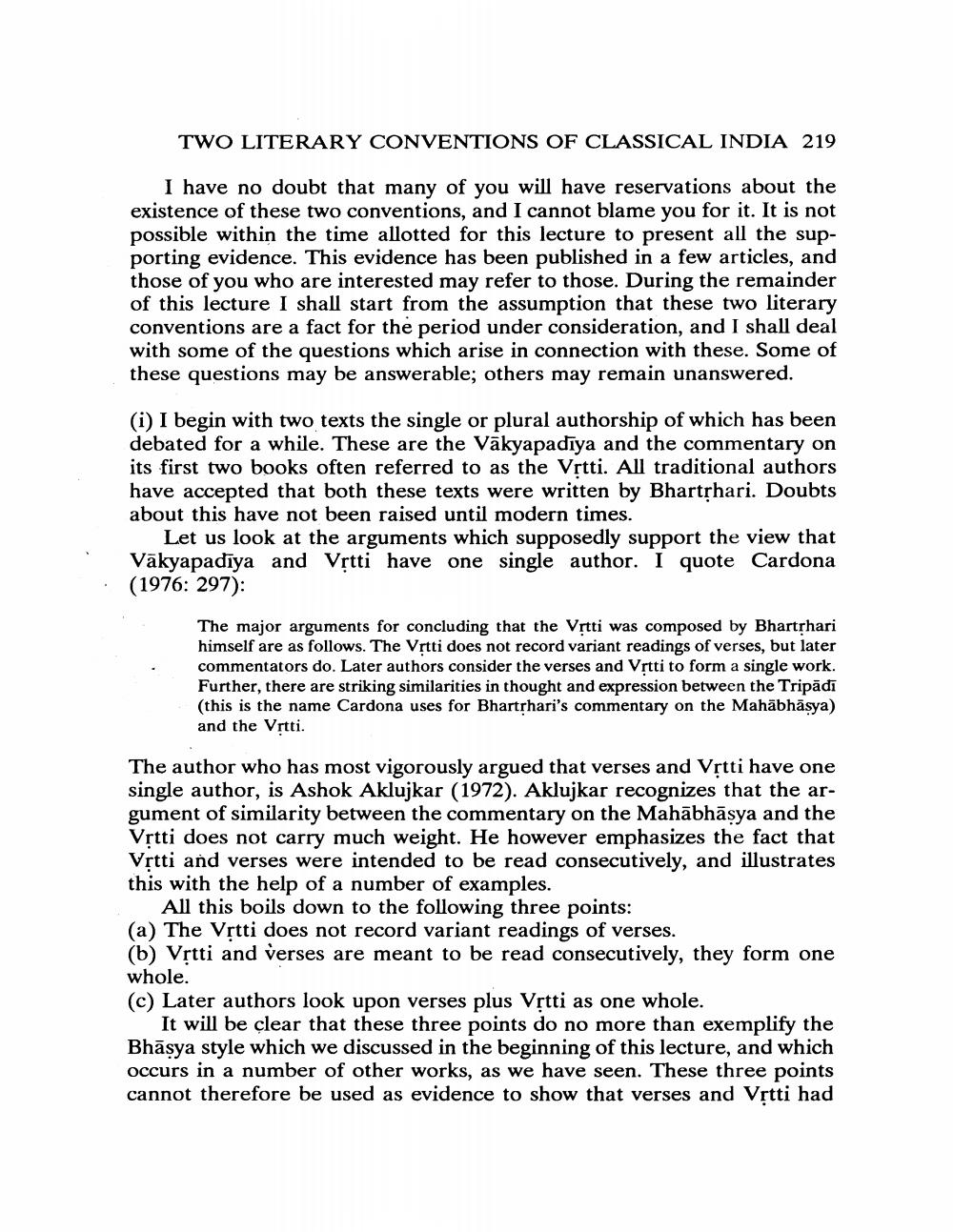________________
TWO LITERARY CONVENTIONS OF CLASSICAL INDIA 219
I have no doubt that many of you will have reservations about the existence of these two conventions, and I cannot blame you for it. It is not possible within the time allotted for this lecture to present all the supporting evidence. This evidence has been published in a few articles, and those of you who are interested may refer to those. During the remainder of this lecture I shall start from the assumption that these two literary conventions are a fact for the period under consideration, and I shall deal with some of the questions which arise in connection with these. Some of these questions may be answerable; others may remain unanswered.
(i) I begin with two texts the single or plural authorship of which has been debated for a while. These are the Vākyapadiya and the commentary on its first two books often referred to as the Vrtti. All traditional authors have accepted that both these texts were written by Bhartshari. Doubts about this have not been raised until modern times.
Let us look at the arguments which supposedly support the view that Vākyapadiya and Vrtti have one single author. I quote Cardona (1976: 297):
The major arguments for concluding that the Vịtti was composed by Bharthari himself are as follows. The Vrtti does not record variant readings of verses, but later commentators do. Later authors consider the verses and Vrtti to form a single work. Further, there are striking similarities in thought and expression between the Tripādi (this is the name Cardona uses for Bhartrhari's commentary on the Mahābhāsya) and the Vștti.
The author who has most vigorously argued that verses and Vrtti have one single author, is Ashok Aklujkar (1972). Aklujkar recognizes that the argument of similarity between the commentary on the Mahābhāsya and the Vrtti does not carry much weight. He however emphasizes the fact that Vrtti and verses were intended to be read consecutively, and illustrates this with the help of a number of examples.
All this boils down to the following three points: (a) The Vrtti does not record variant readings of verses. (b) Vrtti and verses are meant to be read consecutively, they form one whole. (c) Later authors look upon verses plus Vrtti as one whole.
It will be clear that these three points do no more than exemplify the Bhāsya style which we discussed in the beginning of this lecture, and which occurs in a number of other works, as we have seen. These three points cannot therefore be used as evidence to show that verses and Vţtti had




